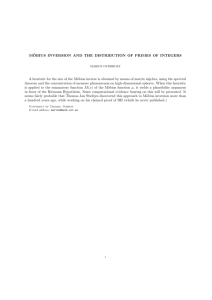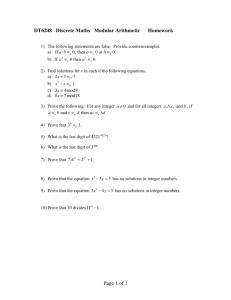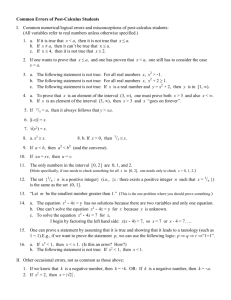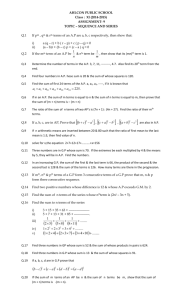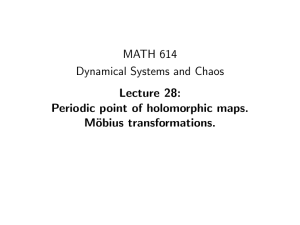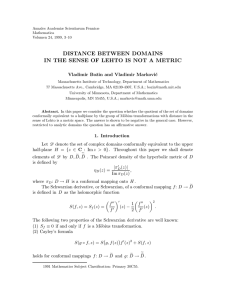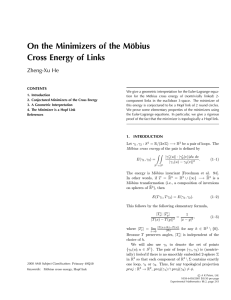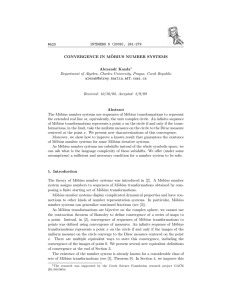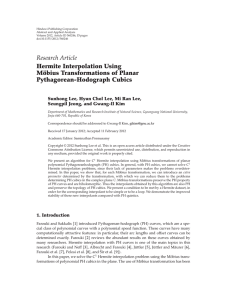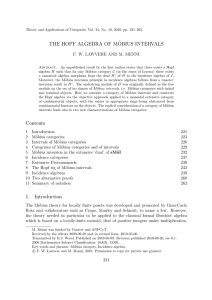Sample Final Exam Questions (Mandatory Part)
advertisement
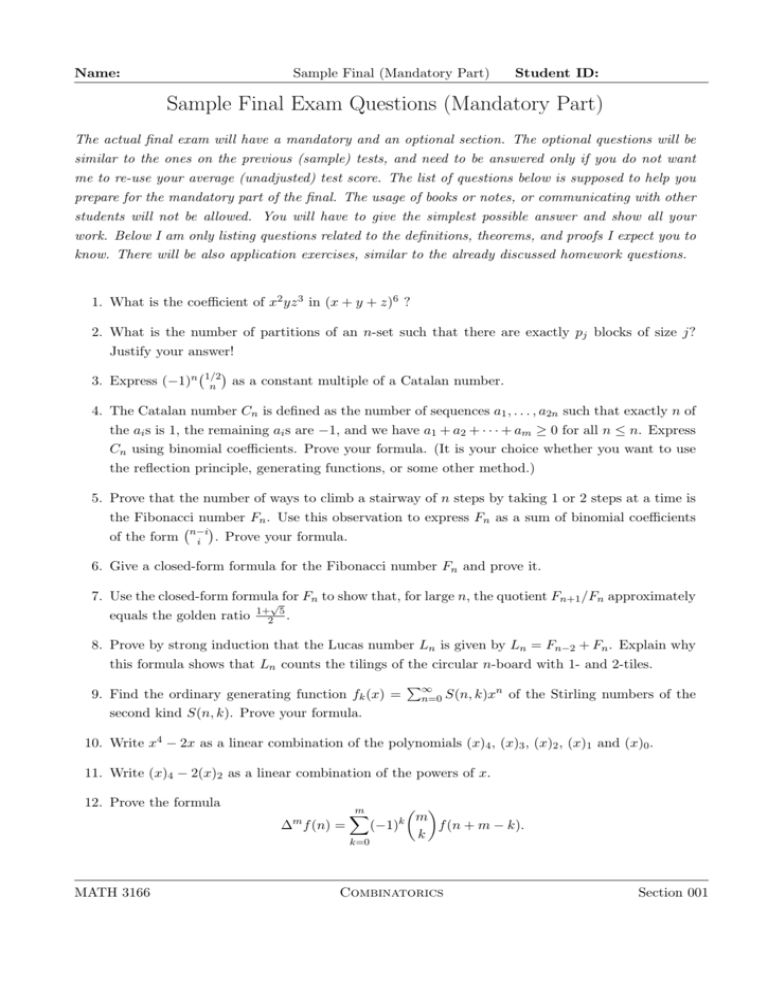
Name:
Sample Final (Mandatory Part)
Student ID:
Sample Final Exam Questions (Mandatory Part)
The actual final exam will have a mandatory and an optional section. The optional questions will be
similar to the ones on the previous (sample) tests, and need to be answered only if you do not want
me to re-use your average (unadjusted) test score. The list of questions below is supposed to help you
prepare for the mandatory part of the final. The usage of books or notes, or communicating with other
students will not be allowed. You will have to give the simplest possible answer and show all your
work. Below I am only listing questions related to the definitions, theorems, and proofs I expect you to
know. There will be also application exercises, similar to the already discussed homework questions.
1. What is the coefficient of x2 yz 3 in (x + y + z)6 ?
2. What is the number of partitions of an n-set such that there are exactly pj blocks of size j?
Justify your answer!
3. Express (−1)n
1/2
n
as a constant multiple of a Catalan number.
4. The Catalan number Cn is defined as the number of sequences a1 , . . . , a2n such that exactly n of
the ai s is 1, the remaining ai s are −1, and we have a1 + a2 + · · · + am ≥ 0 for all n ≤ n. Express
Cn using binomial coefficients. Prove your formula. (It is your choice whether you want to use
the reflection principle, generating functions, or some other method.)
5. Prove that the number of ways to climb a stairway of n steps by taking 1 or 2 steps at a time is
the Fibonacci number Fn . Use this observation to express Fn as a sum of binomial coefficients
of the form n−i
i . Prove your formula.
6. Give a closed-form formula for the Fibonacci number Fn and prove it.
7. Use the closed-form formula
for Fn to show that, for large n, the quotient Fn+1 /Fn approximately
√
1+ 5
equals the golden ratio 2 .
8. Prove by strong induction that the Lucas number Ln is given by Ln = Fn−2 + Fn . Explain why
this formula shows that Ln counts the tilings of the circular n-board with 1- and 2-tiles.
9. Find the ordinary generating function fk (x) =
second kind S(n, k). Prove your formula.
P∞
n=0 S(n, k)x
n
of the Stirling numbers of the
10. Write x4 − 2x as a linear combination of the polynomials (x)4 , (x)3 , (x)2 , (x)1 and (x)0 .
11. Write (x)4 − 2(x)2 as a linear combination of the powers of x.
12. Prove the formula
m
∆ f (n) =
m
X
k=0
MATH 3166
m
(−1)
f (n + m − k).
k
k
Combinatorics
Section 001
Name:
13. Prove the formula
Sample Final (Mandatory Part)
n X
n
f (n) =
∆k f (0)
k
Student ID:
for n ≥ 0,
k=0
and explain how this formula may be used to find a closed form formula for a higher order
arithmetic sequence.
14. Find a closed-form formula for f (n) = 13 + 23 + · · · + n3 .
15. Prove that the Stirling number of the second kind s(n, k) is given by s(n, k) = (−1)n−k c(n, k)
where c(n, k) is the number of permutations of {1, 2, . . . , n} with k cycles.
16. State the definition of a partially ordered set and give an example of an infinite poset that is
locally finite.
17. Draw the Hasse diagram of the partially ordered set D20 of positive divisors of 20, ordered by
the relation “divides”.
18. Define the incidence algebra and the zeta function of a locally finite poset. Explain how the
convolution operation corresponds to matrix multiplication and the relation between the matrices
representing the zeta function and the Möbius function.
19. Consider the set of finite subsets of a set, partially ordered by inclusion. Given X ⊆ Y , what is
the value µ(X, Y ) of the Möbius function µ, evaluated at (X, Y )? Justify your formula!
20. State and outline the proof of the Möbius inversion formula.
21. What is the consequence of the Möbius inversion formula for the set N of natural numbers,
totally ordered by the usual ≤ relation?
22. Consider the set Dn of positive divisors of n, partially ordered by the relation “divides”. Given
x, y ∈ Dn what is the value µ(x, y) of the Möbius function µ, evaluated at (X, Y )? Justify your
formula! (Note: in your justification you may need to use the formula for the Möbius function
of a product of posets. You do not need to know how to prove this formula, but you have to
know it to be able to use it.)
Good luck.
MATH 3166
Gábor Hetyei
Combinatorics
Section 001
